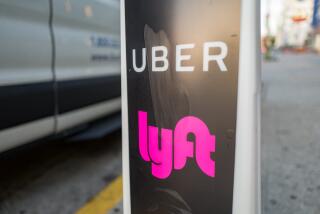Buying Individual Bonds: If You Must, Here’s How
- Share via
For the vast majority of small investors, buying individual convertible bonds doesn’t make sense.
Why? Because convertible bonds:
* Trade in lots of $10,000 or considerably more, so you might not have enough cash to achieve proper diversification.
* May be off-limits to individual investors, because roughly half of all new convertibles are classified as 144a securities. Only institutional accounts are immediately privy to those.
* Are difficult to manage. In addition to analyzing the underlying stock, you have to know how to assess the bond’s complex call terms and conversion features and how to act if the bond is called.
* Are difficult to trade. “This is really an institutional market,” says Nick Calamos, director of research at Calamos Asset Management in Naperville, Ill. “You’ll find the market to be more liquid when you’re trying to sell a thousand or a million bonds than when you’re trying to trade three to five.”
But if you do decide to invest in individual convertibles, do so methodically.
Notes Anand Iyer, head of global convertibles research at Morgan Stanley: “You should build a convertible portfolio much like you’d build a house. You first build the foundation, which should be rock solid. Once that’s in place, you build another layer, and then another layer.”
Step 1: For conservative-minded investors, the foundation of a convertible portfolio begins with so-called busted bonds (see story), convertibles with high yields that aren’t sensitive to movements in their underlying stocks.
Among those that Iyer currently recommends is Phycor’s 4.5% bond due February 2003.
(This bond, along with the others mentioned below, are part of a recommended portfolio of convertibles recently introduced by Morgan Stanley for individual convertible investors.)
Shares of this physician management firm are trading more than a third below the overall market’s average price-earnings ratio, based on 1999 estimated earnings, Iyer notes. In the event the underlying stock loses value, which it has, this bond should drop only about a quarter as much, he predicts.
Step 2: Next are bonds that are somewhat equity-sensitive--but that still provide decent protection should their underlying stocks fall.
Metamor Worldwide’s 2.94% coupon bond, due August 2004, is an example.
Metamor is a leading provider of temporary staffing in the information technology industry. Morgan Stanley analyst Adam Waldo thinks these shares could rise more than 80% over the next nine months. If that occurs, Iyer believes the convertible will capture up to 60% of those returns.
Step 3: Finally, you’re ready to add the riskiest types of convertibles to your portfolio--those that are extremely equity-sensitive.
If their underlying stocks appreciate, these bonds capture nearly all of those gains. Unfortunately, should the stocks fall, the bonds will fall significantly too.
An example is Costco’s zero-coupon bond, due August 2017. If the retailer’s stock rises, this bond ought to capture as much as 85% of that movement, Iyer says. Unfortunately, should the stock fall, the bond is expected to fall about 75% as much.
Currently, Iyer recommends putting 15% of your convertible money into busted bonds; 65% into middle-of-the-road issues; and 20% into the most equity-sensitive converts.
In the next six to 18 months, you may want to play it safer. Increase your allocation of busted bonds until they represent as much as 30% of your convertibles portfolio, Iyer says.
More to Read
Inside the business of entertainment
The Wide Shot brings you news, analysis and insights on everything from streaming wars to production — and what it all means for the future.
You may occasionally receive promotional content from the Los Angeles Times.










